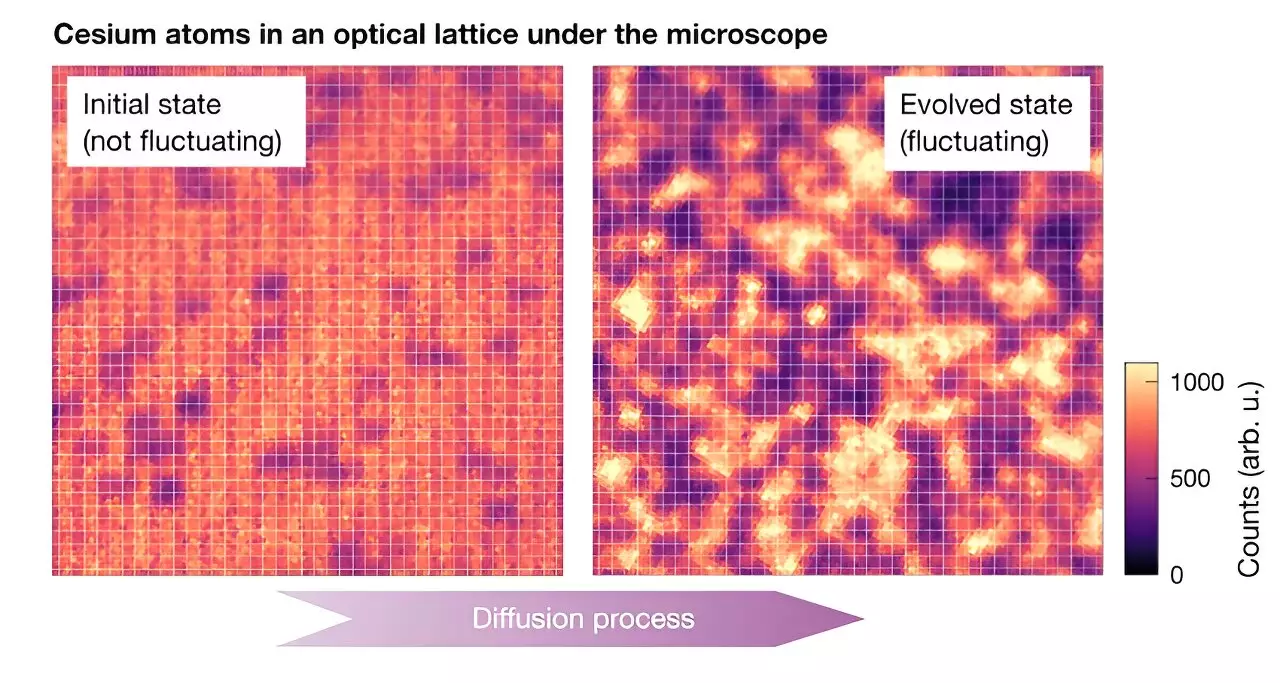Recent investigations into the complex interactions present in quantum systems have led to significant advancements in our understanding of equilibrium fluctuations. A remarkable collaboration between researchers from Ludwig-Maximilians-Universität, Max-Planck-Institut für Quantenoptik, Munich Center for Quantum Science and Technology (MCQST), and the University of Massachusetts culminated in a pivotal study that sheds new light on how large-scale quantum simulations can facilitate our grasp of chaotic processes in these systems. Featured in the esteemed journal Nature Physics, this research underscores the potential to harness existing theoretical frameworks to better describe quantum particles that exhibit unique properties differing from classical physics.
Quantum Gas Microscopy: A Lens into the Atomic World
At the core of the researchers’ methodology lies the innovative use of a quantum gas microscope, a sophisticated apparatus designed to manipulate and monitor individual atoms within ultracold atomic gases. The intrinsic challenge posed by quantum systems, particularly when forecasting their behavior as numerous particles interact, stems from the immense computational resources required to simulate every atom’s movement. Co-author Julian Wienand articulated this dilemma, explaining that while theoretically feasible, practical limitations often thwart attempts at detailed simulations.
Fortunately, the research team identified hydrodynamics theory as a viable approach to circumvent these computational obstacles. By adopting this theoretical framework, physicists can effectively approximate how particles interact under chaotic conditions, where local thermal equilibrium can be assumed. As Wienand noted, this paradigm shift allows for a macroscopic representation of particles depicted as a continuous density field governed by differential equations that encapsulate their dynamic behaviors.
The introduction of fluctuating hydrodynamics (FHD) emerges as a revolutionary extension to classical hydrodynamics, which usually neglects the smaller, thermal fluctuations inherent in quantum systems. FHD’s capacity to account for rapid fluctuations offers a powerful tool for physicists exploring complex quantum environments. Specifically, it posits that pivotal variables, such as diffusion constants, can encapsulate the broader dynamics at play within these systems. Historically, FHD has been leveraged to investigate various classical settings; however, its application to chaotic quantum systems had remained an open question until this latest study.
Wienand elaborated on the distinctions between classical and quantum systems, emphasizing that quantum phenomena such as entanglement challenge conventional understanding and complicate calculations. Thus, the ability to describe quantum processes using FHD represents a monumental stride in quantum physics, opening channels for new predictions and enhanced comprehension of intricate quantum behaviors.
The culmination of these theoretical insights materialized through groundbreaking experimental work with a cesium quantum gas microscope that enables precise imaging of ultracold Cs atoms. By creating an optical lattice for these atoms, the researchers engineered a controlled environment where intricate quantum many-body interactions could be observed. This setup facilitated the examination of fluctuations as atoms moved and interacted after an intentional alteration of the lattice depth—an action that ignited a diffusion process leading to thermalization.
Through this experiment, the team successfully tracked fluctuating behaviors over time, leading to the affirmation that FHD effectively characterizes the observed system dynamics. The conclusions drawn from this innovative work are remarkable as they not only validate FHD theory’s applicability to chaotic quantum systems but also pave the way toward a unified understanding of macroscopic behavior predicated on simple underlying constants.
The findings of this study suggest a profound synergy between classical and quantum frameworks. It presents the intriguing idea that even in the presence of complex micro-level interactions typical of chaotic systems, macroscopic properties may exhibit simplistic behavior. The versatility of the diffusion constant—a quantity stemming from equilibrium principles—stood out as particularly significant, provoking reflections on the relationship between equilibrium theories and systems that are inherently out-of-equilibrium.
As Wienand and his colleagues embark on further experimental investigations, questions linger regarding the behaviors of fluctuations in non-thermalizing systems, and whether FHD frameworks can accommodate more intricate observables in diverse quantum environments. These queries not only enhance the scientific discourse surrounding quantum dynamics but also hold the potential to invigorate future studies aiming to unlock deeper truths about the quantum realm.
This research offers a promising exploration of the chaotic, fluctuating nature of quantum systems, underlining that methodologies rigorously established in classical physics could indeed transcend to enrich our understanding of quantum phenomena, revealing the potential simplicity hiding within the complexity of quantum chaos.


Leave a Reply